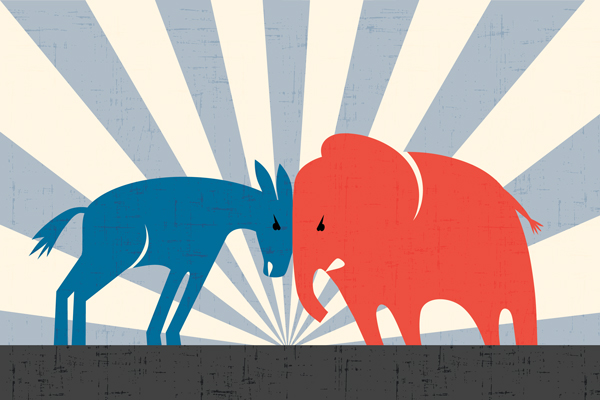The Covid-19 pandemic has been devastatingly problematic for the U.S. ever since it first settled in. With the 2020 presidential election just around the corner, the pandemic has caused a battle of “pointing-fingers” on the political side of things. Tom Pepinsky, an expert on economic policy, stated that the massive partisan divide created a lot of drama in Washington D.C. back when the Covid-19 pandemic was at its peak. In this time of political unsettledness, I am here to argue that the geopolitical and partisanship implications of Covid-19 have been improperly associated with the decision-making of the U.S. president during the Covid-19 pandemic.
Geopolitical Consequences
As we know it, there have been many geopolitical implications for the U.S. that were brought upon by the Covid-19 pandemic. The most notable geopolitical relationship that has been severed over the course of the Covid-19 pandemic would have to be the relationship between the U.S. and China. According to the article Taking Stock: Where are Geopolitics Headed in the Covid-19 Era?, one of the major implications that came to be between the U.S. and China was the fighting that occurred over the origins of the coronavirus.
Donald Trump’s ultimate decision to cut-off relations with China was said to be too aggressive by some (so to say). While China is indeed responsible (to some extent) for bringing the coronavirus to the U.S., there were other conservative methods that Trump could’ve gone about handling the situation. However, it’s worth noting that the effects of Trump cutting-off China won’t show immediate change on society, and that those who criticize Trump’s aggressiveness should wait to see before being so critical of this decision.
For me, I’ve always been told that you shouldn’t be critical of something that isn’t yet concrete. In this case, I think the partisan divides among society is something that affects how people view Trump’s decision to cut-off China. Due to the spread of partisanship among society in this time, we begin to see where the phrase of “Red Pandemic vs. Blue Pandemic” comes into play.
“Red Pandemic” vs. “Blue Pandemic”
The true meaning of the phrase “Red Pandemic vs. Blue Pandemic” is based on the way that partisan players and their following audiences view how the Covid-19 pandemic should’ve been handled. People that are for a “Red Pandemic” associate with the Republican Party. For many, the aggressive approach to reopening businesses, as well as attempting to kickstart economic-recovery efforts are just some of the many ideas that are associated with someone who supports a “Red Pandemic”. On the other hand, people that are for a “Blue Pandemic” associate with the Democratic Party. Unlike “Red Pandemic” supporters, “Blue Pandemic” supporters favor a more cautious approach when it comes to reopening businesses, and the rest of the country for that matter. For example, an article from POLITICO specifically talks about how Donald Trump’s aggressive approach to reopen businesses (that were shut down due to the Covid-19 pandemic) is called into question by the opposition, the Democratic Party, because they think there should be a more cautious approach to reopening businesses.
Partisanship Through Television and Social Media
Partisanship can best be described as bias in favor of a specific cause, or political party in this case. It is an aspect that is present among certain television networks, as well as social media accounts. For example, FOX is known to be a republican television network, and CNN is known to be a democratic television network. As a result of the partisanship shown by certain television networks, there tends to be a lot of “punches thrown” between networks with allegiances to an opposing political party. As for the social media side of things, there is a lot of valid political information put forth by verified/certified social media accounts; however, there are also certain accounts out there (that solely seek “pageviews”) which provide false headlines/misinformation that is out there for all to see. According to the article Slanted and Self-Serving Media, author John Raidt talks about how there used to be a time where journalists would be journalists, and politicians would be politicians. In other words, the hefty financial relationship between journalism and politics sort of blurs the boundaries between the two institutions.
If you look at how television networks and social media reacted to the Covid-19 pandemic, you can see how there was a great deal of information being put out there for all the world to see. The thing is, how much of that information was true? How many journalists were creating headlines just to make a quick buck, and can society really trust the information put forth by a journalist that is payed off by a specific political party? Partisanship is everywhere, but it shouldn’t be relied on too often.
It should also be noted that the press and political parties suffer from a crisis of credibility. As mentioned in Slanted and Self-Serving Media, both trade on fear and division, while using exaggeration as stock in trade. Much of what is written by the journalists is often reiterated by politicians in their opinionated pieces. The journalists are aiming to play with the audience’s emotions, meaning that they particularly look to capture the fear, anger, or disgust that someone would feel about the opposing political party.



This thrusting dildo delivers rhythmic in-and-out motion through 7 selectable modes. The smooth silicone exterior feels soft to the touch, while the strong suction base allows stable hands-free mounting on any flat surface.https://www.realdick.co.uk/collections/black-dildo
Laat je verleiden door ons uitgebreide assortiment en ontdek hoe elke vorm en textuur een uniek verhaal van genot schrijft op je lichaam. Van tedere strelingen tot intens diep gevoel – hier vind je de perfecte partner voor je fantasieën.
https://www.dildoshop.nl/